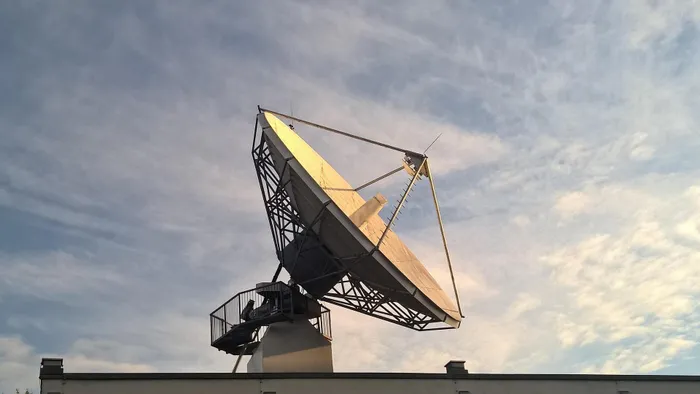Rethinking satellite connectivity: Bridging the digital divide in the SADC

The future of SADC connectivity is not buried underground; it is orbiting above us. It’s time we reached for it, says the author.
Image: Pixabay
As someone who has spent decades working at the intersection of telecommunications policy, spectrum management, and infrastructure development, I’ve seen firsthand how connectivity can transform lives, economies and entire regions. Yet, despite our best efforts, large parts of the Southern African Development Community (SADC) remain digitally excluded. The time has come for us to rethink our approach, and recalibrate our strategies, especially when it comes to satellite connectivity.
The recently released report, Unlocking Growth in the SADC: Harnessing the Potential of Non-Geostationary Satellite Orbit Systems commissioned by Amazon, makes a compelling case for why Non-Geostationary Satellite Orbit (NGSO) systems must be central to our digital strategy.
The numbers speak for themselves: $16.9 billion in annual economic benefits, $10.3 billion in infrastructure cost savings, and millions of people brought online. But beyond the figures lies a deeper truth. NGSO systems offer us a chance to leapfrog legacy limitations and build a truly inclusive digital future with significantly improved affordability. This is critical factor in our region, where affordability remains a primary barrier to connectivity.
The connectivity gap is still too wide. Despite progress, the SADC region still lags behind global benchmarks. As of 2023, our average 4G mobile network population coverage was just 77%, compared to the global average of 90%. Geographical coverage stood at 75%, leaving a quarter of our region outside any network footprint. And even where coverage exists, affordability, device access, and digital literacy continue to hold back usage.
“Significant investment in infrastructure is needed to drive Internet coverage and usage in the region,” the report notes. “Various challenges, including low population density in certain areas and terrain-based constraints, must first be addressed.”
This is where NGSO systems shine. Unlike traditional terrestrial infrastructure, NGSO satellites can deliver high-speed, low-latency Internet to remote and hard-to-reach areas, without the need for extensive ground-based networks. They orbit closer to Earth, reducing latency and enabling real-time applications, from telemedicine to e-learning to e-commerce.
For too long, satellite connectivity has been treated as a secondary option, useful only when fibre or terrestrial mobile networks fail. That mindset must change. NGSO systems are no longer the expensive, high-latency solutions of the past. Today’s low-Earth orbit (LEO) constellations offer performance that rivals terrestrial broadband, with the added advantage of scalability and reach.
“NGSO systems may be the only technically and commercially feasible option to provide wide coverage with minimal ground infrastructure in highly remote or geographically challenging terrains,” the report emphasizes.
In fact, NGSO systems can complement terrestrial networks by serving as backhaul solutions, reducing the cost of expanding mobile coverage while enabling local mobile network operators and telcos to grow their networks and reach more customers. These partnerships can help local operators extend their footprint cost-effectively into previously unserved areas. The report estimates $10.3 billion in cost savings for mobile network operators if NGSO is used for backhaul instead of fibre, a figure that should make any policymaker or investor sit up and take notice.
Beyond basic connectivity, NGSO systems unlock entirely new economic opportunities. The report outlines three major growth frontiers:
- Logistics and Trade: IoT-enabled tracking across road networks could save $5.4 billion in logistics costs by 2030, improving intra-regional trade and competitiveness.
- Disaster Management: Enhanced early warning systems powered by satellite connectivity could mitigate $1.2 billion in infrastructure damage from climate-induced disasters.
- Environmental Monitoring: NGSO-enabled IoT sensors can support carbon credit markets and green finance, generating $180 million in new economic activity.
These are not abstract benefits. They are tangible, measurable, and achievable. But only if we act decisively. Recent natural disasters in Mozambique, South Africa, and Malawi severely impacted critical infrastructure. If reliable real-time NGSO satellite connectivity had been available, it could have significantly supported disaster response and mitigation efforts across the region.
And the Universal Service Obligations for schools' connectivity, imposed on operators during South Africa’s inaugural IMT spectrum auction, which I led while at ICASA, could be accelerated through the deployment of High Throughput Satellite (HTS) systems.
We also acted so effectively to launch South Africa’s “Maru a Mokopane” initiative and Botswana’s white space telemedicine project, are powerful examples of what’s possible when connectivity meets community needs. We must scale these efforts region-wide.
The biggest barrier to NGSO deployment in the SADC is not technology, it is regulation. Our licensing frameworks are outdated, our spectrum management policies are rigid, and the international framework for spectrum sharing between legacy and newer satellite technologies – called EPFD (Equivalent Power Flux Density) limits –– were designed for a different era.
“Current EPFD rules, developed and adopted when NGSO satellites were far less advanced, are now dated,” the report warns. “A global push to modernise these limits would enable satellite-based networks to become more easily scalable, helping us to connect more of our citizens, more affordably.”
Governments, regulators, and industry partners worldwide should work together to support evidence-based technical studies and develop new approaches to spectrum management, ensuring progress can continue. SADC countries have an opportunity to contribute to this international discussion at the International Telecommunication Union's Working Party 4A (ITU WP4A), the UN specialized agency responsible for satellite regulations, helping modernise global rules in the coming years to better serve our region's need.
We need harmonised licensing across member states, streamlined approval processes, and modernised technical standards. The United States, Europe, and several countries in South America and Asia are already moving in this direction. Connectivity is more than infrastructure - it is about people. Device affordability, digital literacy, and inclusive policies are essential to ensure that once coverage is available, people can actually use it.
“Driving digital literacy through skilling programs can support SADC populations to unlock the productivity benefits created by digital technologies,” the report rightly points out.
South Africa’s “Maru a Mokopane” initiative and Botswana’s white space telemedicine project are powerful examples of what’s possible when connectivity meets community needs. We must scale these efforts region-wide.
As someone who has worked with regulators, operators, and policymakers across Africa, I believe we are at a crossroads. NGSO systems offer us a rare opportunity to close the digital divide, drive economic growth, and build resilience against future shocks, while empowering consumers with affordable access to life-changing services from education to healthcare to financial inclusion. We must act now to recalibrate our thinking. Let us embrace NGSO not as a niche technology or a threat, but as a cornerstone of our digital future. Let us build the regulatory, financial, and human capital foundations needed to make this vision a reality.
The future of SADC connectivity is not buried underground; it is orbiting above us. It’s time we reached for it.

Peter Zimri, Associate Director, Space & Connectivity at Access Partnership
Image: Supplied
Peter Zimri, Associate Director, Space & Connectivity at Access Partnership
*** The views expressed here do not necessarily represent those of Independent Media or IOL.
BUSINESS REPORT